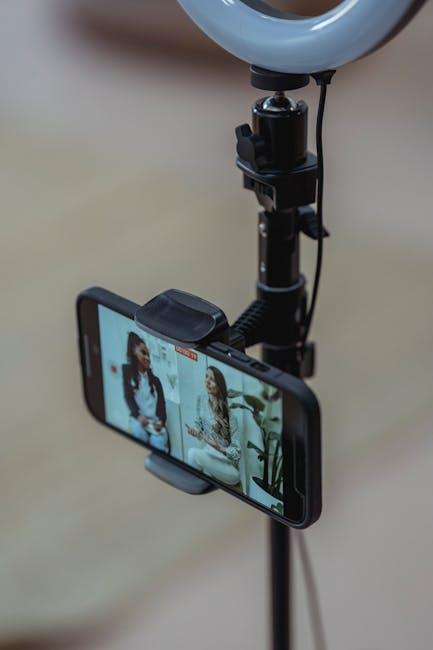As streaming services become an integral part of our entertainment experience, the demand for high-quality video playback has never been more pronounced. However, for those utilizing older smart TVs, achieving optimal streaming quality can often be a challenge due to hardware limitations and outdated software. This article aims to guide you through the most effective strategies to enhance your streaming experience on older smart TVs. From adjusting settings to using external devices, we will explore a variety of practical solutions that can help you enjoy smoother, clearer, and more reliable streaming. Whether you’re dealing with buffering issues, low resolution, or connectivity problems, these tips will provide you with the necessary tools to make the most of your existing technology.
Choosing the Right Streaming Device for Older Smart TVs
When it comes to enhancing your viewing experience on an older smart TV, selecting the right streaming device is crucial. With advancements in technology, many older TVs may not support the latest streaming apps or offer optimal performance. Here are some key factors to consider:
- Compatibility: Ensure the streaming device you choose is compatible with your TV’s ports and supports the video and audio formats your TV can handle. Most devices connect via HDMI, but double-check the specifications to avoid any surprises.
- User Interface: Look for a device with an intuitive and user-friendly interface. This can significantly enhance your streaming experience, especially if the built-in interface of your older TV is sluggish or outdated.
- Performance: Opt for a device with a powerful processor and ample RAM. This ensures smooth playback, quick app loading times, and the ability to handle high-definition content without buffering.
- Content Availability: Verify that the streaming device supports all the apps and services you frequently use. Popular choices often include Netflix, Hulu, Amazon Prime Video, and Disney+.
- Price: While it might be tempting to go for the cheapest option, investing in a mid-range device can offer better performance and longevity, making it a cost-effective choice in the long run.
By carefully considering these aspects, you can find a streaming device that breathes new life into your older smart TV, ensuring you enjoy a seamless and high-quality viewing experience.
Adjusting Network Settings to Improve Streaming Performance
Improving streaming performance on older smart TVs often requires a tweak in network settings to ensure a smoother viewing experience. Start by checking your Wi-Fi signal strength. If the signal is weak, consider relocating your router closer to the TV or using a Wi-Fi extender. For those who prefer a more stable connection, connecting your TV directly to the router via an Ethernet cable can significantly reduce buffering issues.
Next, adjust your router’s settings. Ensure that your router’s firmware is up-to-date, as manufacturers often release updates that enhance performance. Access your router’s admin panel and try switching the Wi-Fi channel to one that is less congested, especially if you are in a densely populated area. Additionally, enabling Quality of Service (QoS) settings can prioritize streaming data over other types of traffic, ensuring that your TV gets the bandwidth it needs for uninterrupted playback. Implementing these changes can provide a noticeable improvement in streaming quality on older devices.

Enhancing Picture Quality Through TV Settings Optimization
To breathe new life into your older smart TV and enhance the picture quality, diving into the settings menu can be a game-changer. Start by adjusting the brightness and contrast levels; aim for a balance that brings out detail without washing out colors or creating overly dark scenes. Often, the default settings are set for retail environments, not for the comfort of your living room.
- Color Temperature: Choose a warmer setting for a more natural look, which can be easier on the eyes during long viewing sessions.
- Sharpness: Dial this down to avoid unnatural edges, which can be particularly noticeable in streaming content.
- Motion Smoothing: Consider turning this off for a more cinematic experience, as it can sometimes add an artificial look to films.
For the best streaming experience, ensure that your TV is running the latest firmware updates, as manufacturers often release optimizations that can improve performance and picture quality. Additionally, explore any available app-specific settings that might further enhance the viewing experience on platforms like Netflix or Hulu.

Utilizing Software Updates and Firmware Upgrades for Better Streaming
Keeping your smart TV’s software and firmware up to date is crucial for maintaining optimal streaming quality. Regular updates can enhance performance, fix bugs, and introduce new features that improve your viewing experience. To ensure you’re getting the most out of your device, make it a habit to check for updates periodically. Most smart TVs have an auto-update feature, but if yours doesn’t, navigate to the settings menu and look for the update option. By doing this, you can enjoy smoother streaming and improved compatibility with the latest apps and services.
In addition to updating software, consider these strategies for optimizing your older smart TV:
- Clear the cache: Regularly clear your TV’s cache to free up memory and improve speed.
- Manage apps: Uninstall apps you don’t use to free up resources for streaming.
- Adjust picture settings: Customize picture settings for better clarity and color accuracy.
- Check internet speed: Ensure your internet connection is fast and stable for high-quality streaming.
Implementing these steps alongside regular updates will help you maximize your streaming experience, even on older devices.







































